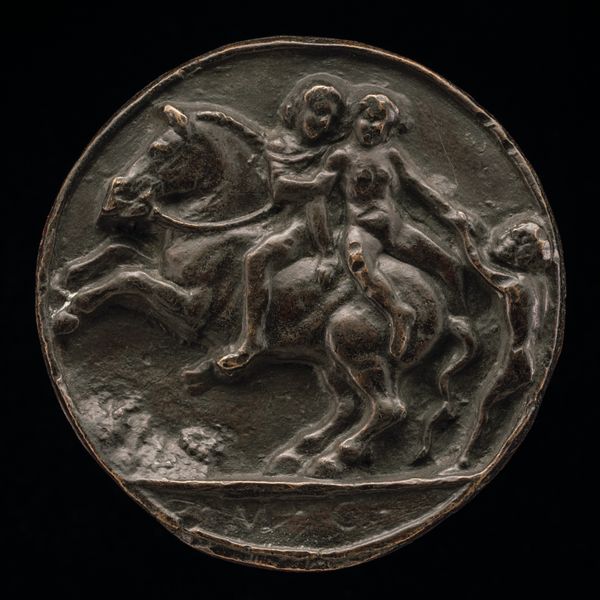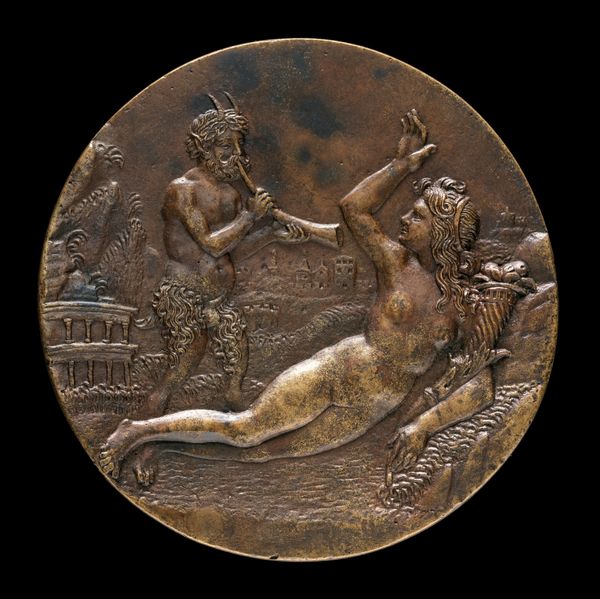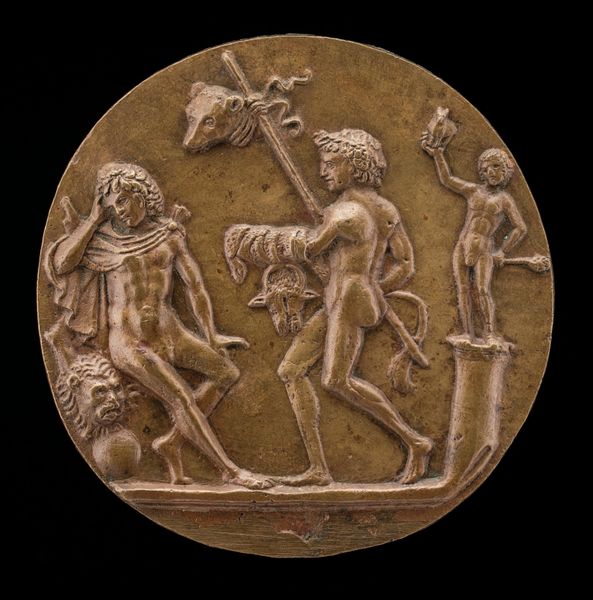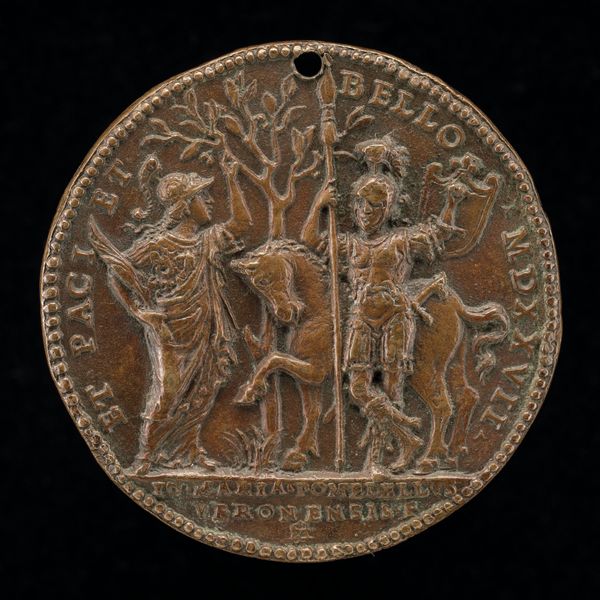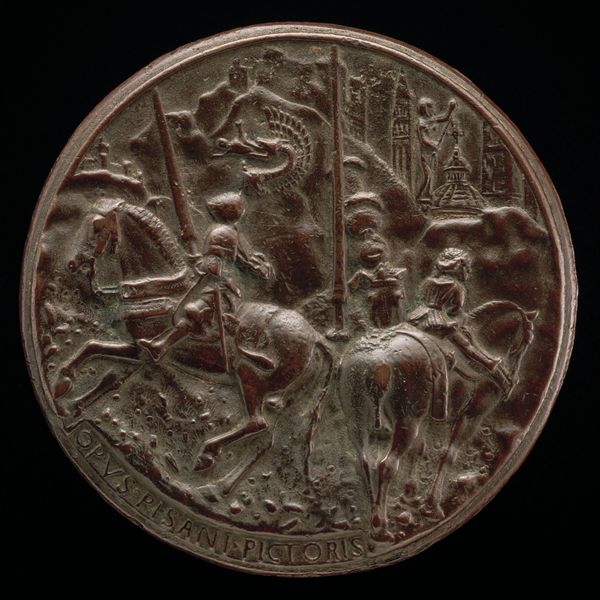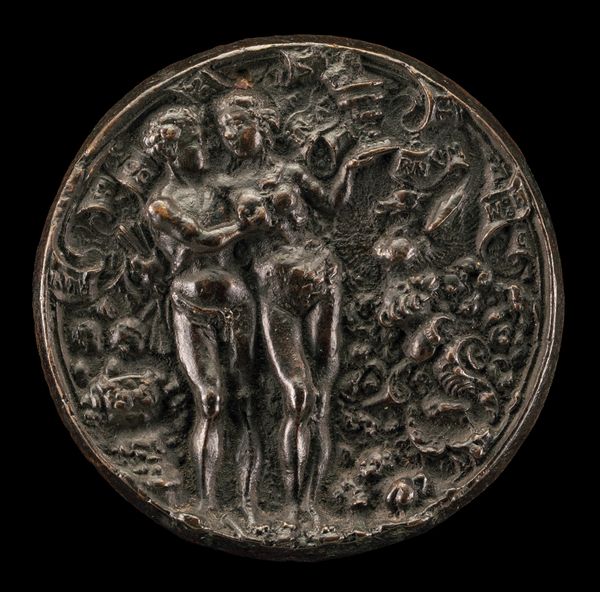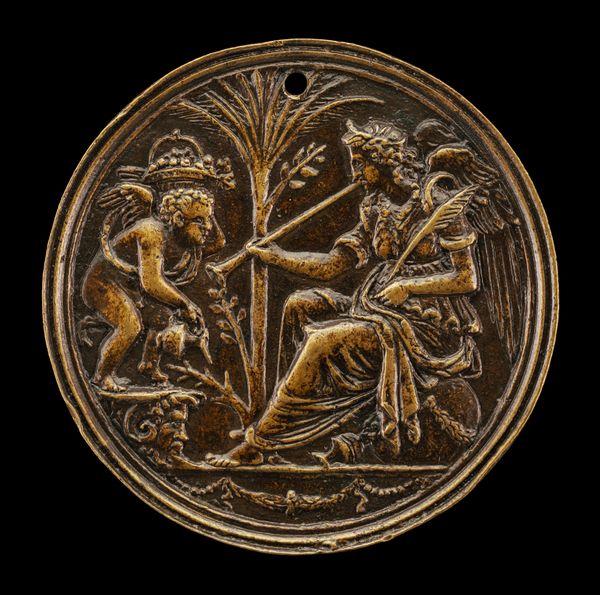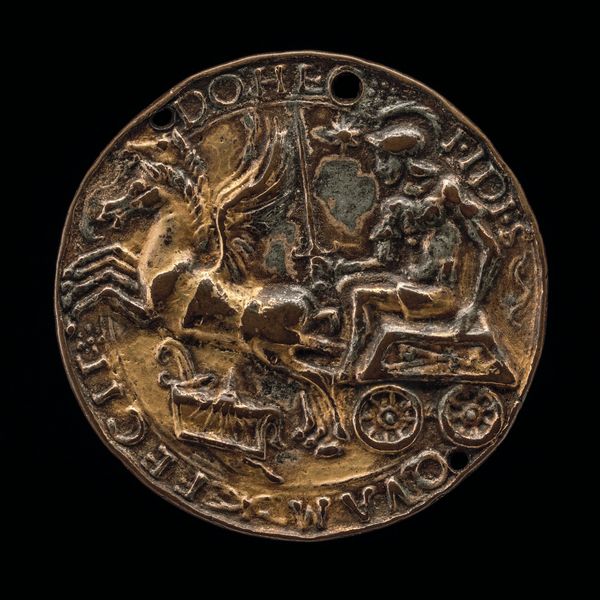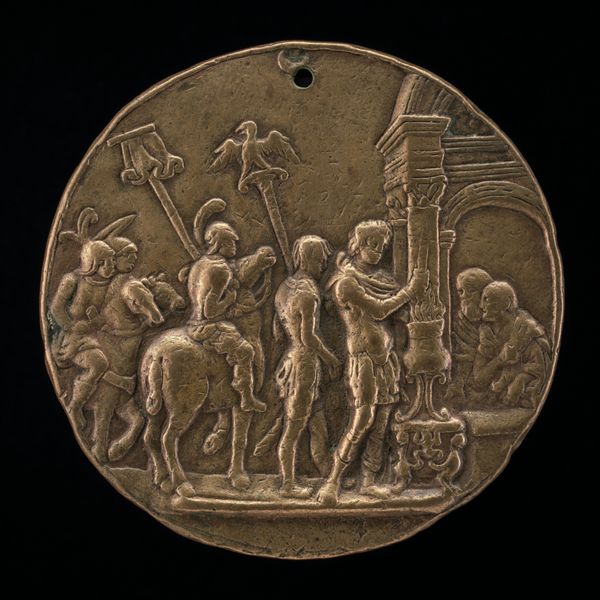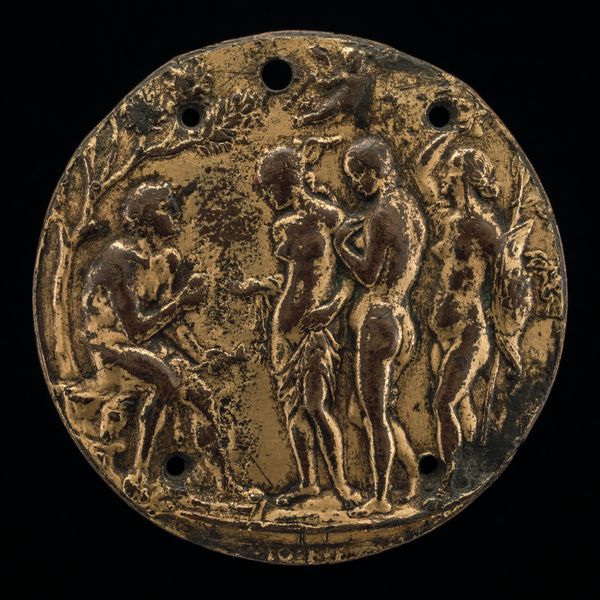![Sleeping Nymph and Two Satyrs [reverse] by Pseudo Antonio da Brescia](/_next/image?url=https%3A%2F%2Fd2w8kbdekdi1gv.cloudfront.net%2FeyJidWNrZXQiOiAiYXJ0ZXJhLWltYWdlcy1idWNrZXQiLCAia2V5IjogImFydHdvcmtzL2Y2OTYzM2JmLWYxNmYtNDUwNy1hNWU4LWIwNGMxZWJhOTY5ZS9mNjk2MzNiZi1mMTZmLTQ1MDctYTVlOC1iMDRjMWViYTk2OWVfZnVsbC5qcGciLCAiZWRpdHMiOiB7InJlc2l6ZSI6IHsid2lkdGgiOiAxOTIwLCAiaGVpZ2h0IjogMTkyMCwgImZpdCI6ICJpbnNpZGUifX19&w=3840&q=75)
relief, bronze, sculpture
#
allegory
#
stone
#
sculpture
#
relief
#
bronze
#
figuration
#
sculpting
#
sculpture
#
italian-renaissance
Dimensions: overall (diameter): 5.9 cm (2 5/16 in.) gross weight: 77 gr
Copyright: National Gallery of Art: CC0 1.0
“Sleeping Nymph and Two Satyrs” was made by Pseudo Antonio da Brescia in the 16th century. The bronze circular artwork depicts a sleeping female nude with two satyrs, male figures who are part human and part goat. During the Renaissance, mythological and allegorical subjects became increasingly popular among artists and patrons. The idyllic and sensual portrayal of the sleeping nymph can be viewed in relation to evolving attitudes toward the female body and sexuality during this period. Representations of nymphs often served as vehicles for exploring themes of desire, beauty, and the natural world. But it’s important to consider the dynamics of power at play here. While the nymph is presented as an object of beauty, her vulnerability as she sleeps raises questions about consent and exploitation. The satyrs, traditionally associated with lust and wildness, further complicate the scene, evoking a sense of unease and potential threat. The artwork invites us to reflect on the complex intersections of gender, sexuality, and power in Renaissance culture.
Comments
No comments
Be the first to comment and join the conversation on the ultimate creative platform.

